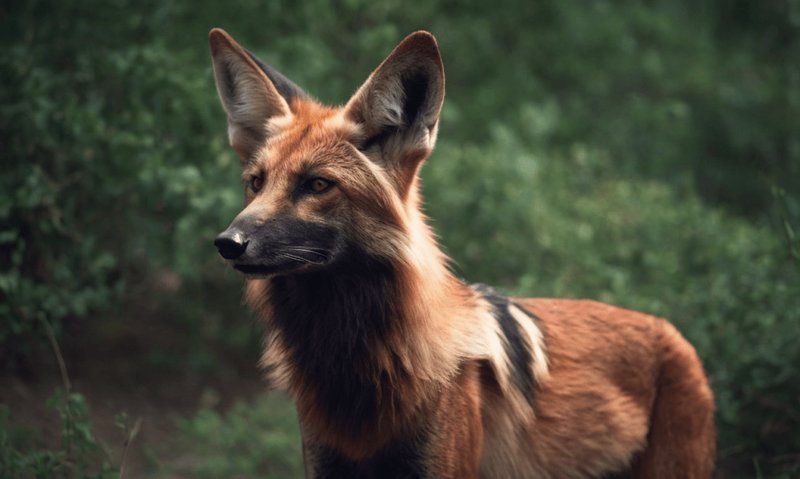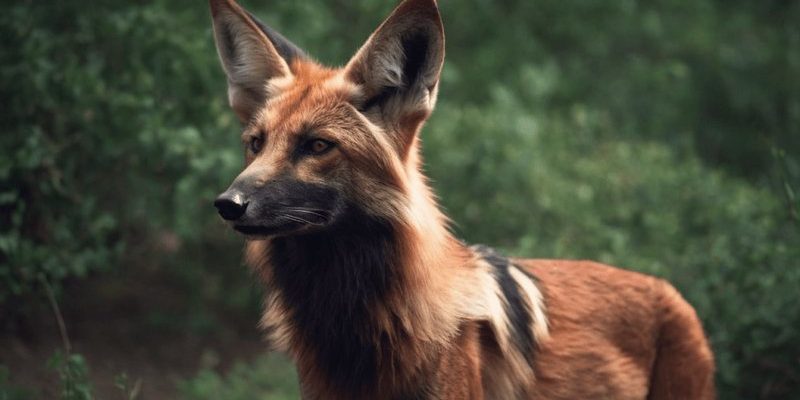
You see, the maned wolf isn’t just a charming animal of the savanna; it’s woven into the cultural fabric of the regions it inhabits. From Brazil to Paraguay, local folklore often paints this wolf in a light that reflects the values, fears, and dreams of the people. So, if you’re curious about how this extraordinary species has been portrayed in folklore and culture, grab a cup of coffee, sit back, and let’s dive in!
The Maned Wolf in Indigenous Folklore
Indigenous cultures have a rich tapestry of stories surrounding the maned wolf. Often, it’s seen as a guardian of the wild, a symbol of strength and resilience. For many tribes in Brazil, this creature represents the spirit of the savanna, embodying the beauty and complexity of nature.
One popular legend tells of a maned wolf who saves a young girl lost in the wilderness. This story emphasizes the wolf’s role as a protector and guide. The girl, frightened and alone, is comforted by the wolf’s presence and led back to her village. This relationship highlights a key theme: coexistence between humans and wildlife.
Furthermore, some tribes view the maned wolf as a trickster figure, much like the coyote in North American folklore. Its unique appearance and behavior make it a perfect candidate for such tales. The maned wolf uses its cleverness to navigate challenges, teaching lessons about adaptability and resourcefulness.
Symbolism of the Maned Wolf in Modern Culture
In contemporary culture, the maned wolf often symbolizes freedom and mystery. Artists, writers, and filmmakers have drawn inspiration from this striking animal, using it as a metaphor for independence and the untamed spirit. The tall, elegant stature of the maned wolf adds to its allure, making it a favorite in wildlife documentaries and nature photography.
You might have seen the maned wolf featured in various forms of media, from animated films to modern art. Its exotic looks make it an appealing subject for artists who want to capture the magic of wildlife. In this way, the maned wolf has transcended its natural habitat, becoming a cultural icon that resonates with many.
Moreover, the maned wolf is often used in conservation messaging. Its presence in media helps raise awareness about habitat loss and the importance of preserving biodiversity. By highlighting such a unique creature, advocates can connect people emotionally to wildlife conservation efforts, making the plight of the maned wolf a symbol for broader environmental issues.
Art and Literature Featuring the Maned Wolf
The maned wolf has not only inspired folklore but also literature and art across the globe. In many children’s books, the wolf is portrayed as a friendly and wise character, imparting lessons of bravery and friendship. These stories help children connect with nature and understand the importance of wildlife protection.
In visual arts, the maned wolf’s striking features and graceful movements have been captured in paintings and sculptures. Artists often depict the wolf against vibrant landscapes, showcasing its connection to the rich biodiversity of the South American grasslands. The contrast of the wolf’s bright fur against the lush greens of its habitat creates beautiful imagery that resonates with viewers.
Poets and writers, too, have used the maned wolf as a metaphor in their works. Its elusive nature symbolizes the struggles and triumphs of life, often reflecting themes of perseverance and the search for identity. This literary representation adds another layer to the cultural understanding of the maned wolf, showing how deeply it resonates within the human experience.
Conservation and Cultural Connections
As the maned wolf faces threats from habitat loss and climate change, cultural connections to this creature become even more critical. Conservation efforts often draw on local folklore to engage communities. By highlighting the cultural significance of the maned wolf, conservationists can foster a sense of pride and responsibility toward protecting its habitat.
In many regions, education programs involve local stories and traditions related to the maned wolf. This approach not only raises awareness about its ecological role but also strengthens community ties. When people see their cultural heritage reflected in conservation efforts, they are more likely to participate and support initiatives aimed at preserving these magnificent animals.
Additionally, engaging local artists to create works inspired by the maned wolf can be a powerful way to boost conservation messages. Through art and storytelling, communities can express their love for the maned wolf, helping to ensure that this remarkable species remains a vibrant part of their cultural identity.
The Maned Wolf in Popular Media
It’s interesting to see how the maned wolf is presented in popular media, including documentaries, books, and even social media. Many people are drawn to this animal’s unique looks and fascinating behaviors, leading to a growing interest in learning more about it.
Documentaries often showcase the maned wolf’s lifestyle in its natural habitat, emphasizing its role in the ecosystem as both predator and prey. These portrayals help viewers appreciate the delicate balance of life in the savanna. With every episode, audiences become more aware of the challenges faced by the maned wolf, adding depth to their understanding of wildlife conservation.
On social media platforms, people share stunning images and interesting facts about the maned wolf. This not only raises awareness but also creates a community of wildlife enthusiasts who celebrate its beauty. Engaging visuals and storytelling have made the maned wolf a popular subject for wildlife pages, helping to spread its story to a wider audience.
The maned wolf is more than just an intriguing animal; it’s a powerful symbol in culture and folklore. From its roles in indigenous stories to its status as a cultural icon in modern society, the maned wolf teaches us about the connection between nature and humanity.
As we explore these legends and artistic representations, we gain a deeper appreciation for the maned wolf and the ecosystems it inhabits. It reminds us that wildlife conservation is about safeguarding not just animals but also the stories and traditions that connect us to them.
So, the next time you hear about the maned wolf, think about the rich cultural history it carries along with its elegant form. It’s a reminder of the magic of nature and our role in protecting it for future generations. Let’s honor the maned wolf, ensuring it remains a beloved part of our cultural heritage and a vital part of the natural world.

